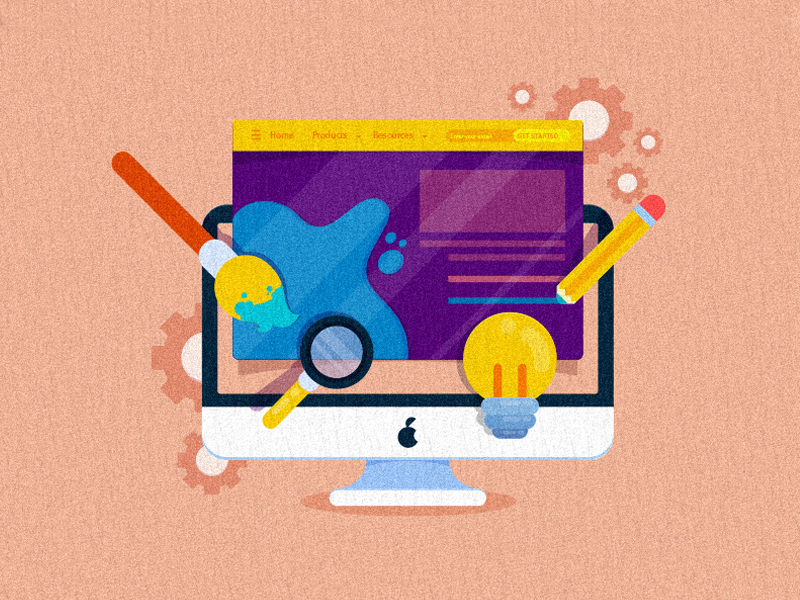Aligned Position Web Design: Transform Your Online Presence with Expert Web Design Services
Aligned Position Web Design: Transform Your Online Presence with Expert Web Design Services
Blog Article
The Most Effective Kinds of Web Style to Improve User Experience and Involvement
In the ever-evolving landscape of electronic communication, the performance of Web style dramatically influences user experience and engagement. Various design strategies, such as minimal, receptive, and interactive formats, each deal special benefits that can cater to diverse user needs.
Minimal Web Layout
As electronic landscapes come to be significantly chaotic, minimal Web style has arised as a powerful method to enhancing user experience. This style philosophy prioritizes simpleness, concentrating on crucial components while removing unnecessary distractions. By making use of adequate white area, straightforward navigation, and a minimal shade combination, minimalist layout cultivates clearness and directs user focus to crucial material.
The core principle of minimal website design is to develop a smooth interaction for customers. By minimizing cognitive tons, users can promptly comprehend information without really feeling overwhelmed. This direct strategy not just improves use but additionally motivates interaction, as site visitors are more probable to discover a site that is aesthetically appealing and very easy to browse.
Additionally, minimalist layout frequently highlights typography and images, making use of these elements tactically to convey messages efficiently. In essence, minimal Web layout is not simply a fad; it is a thoughtful technique that acknowledges the importance of user-centered design.
Responsive Web Design
In today's diverse electronic environment, responsive Web style has actually come to be essential for producing a seamless individual experience across a wide variety of tools. As individuals access sites on smartphones, tablets, desktops, and laptops, the capacity of a site to adapt its layout and web content to various display sizes and resolutions is vital.
Receptive Web design employs adaptable grids, photos, and CSS media queries to ensure that Web material is provided optimally, despite the gadget utilized. This method not only boosts the aesthetic charm of a site however also considerably improves use. Individuals are more probable to involve with a site that provides a regular experience, as it removes the stress of needing to zoom in or scroll excessively.
By taking on responsive style, businesses can enhance their presence and reach a more comprehensive audience. In summary, receptive Web design is an essential method that enhances individual experience, involvement, and overall complete satisfaction.
Interactive Website Design
Responsive Web layout lays the groundwork for improving customer experience, but interactive Web design takes this a step additionally by involving users in a more vibrant means - Aligned Position Web Design. By including elements such as animations, clickable models, and real-time responses, interactive website design astounds users, drawing them into a richer browsing experience
This technique not just promotes interaction however additionally urges customers to discover content actively instead of passively consuming it. Methods such as gamification, where users earn benefits for completing tasks, can substantially improve the moment invested in a site and improve overall complete satisfaction. Additionally, interactive functions can simplify complicated info, making it a lot more pleasurable and digestible.

Including interactive design aspects can additionally lead to greater conversion rates, as individuals are most likely to engage with a website that proactively involves them. Aligned Position Web Design. Inevitably, interactive Web layout transforms user experiences right into remarkable trips, making sure that site visitors return time and again
Flat Style
Characterized by its minimalistic technique, level style stresses simpleness and capability, removing unnecessary aspects and concentrating on crucial attributes. This layout viewpoint focuses on functionality, ensuring that customers can browse user interfaces effortlessly and performance. By using a clean aesthetic, flat design eliminates the mess often located in a lot more elaborate styles, thus enhancing user concentrate on web content and capability.
The hallmark of level style hinges on its use of bold shades, simple typography, and geometric forms. These elements contribute to a visually appealing user interface that is both approachable and modern-day. In addition, level style promotes a sense of quality, enabling individuals to recognize necessary actions and information without disturbance.
Moreover, flat design is particularly reliable in responsive website design, as its simplicity converts well across numerous gadgets and screen Check This Out dimensions. The absence of detailed structures and slopes reduces loading times, which is critical for preserving customer interaction. As electronic landscapes remain to advance, flat design remains a pertinent option for developing user-friendly internet sites that enhance total experience. By concentrating on necessary features, level design not just meets individual demands however additionally encourages seamless communication, making it a vital element of reliable website design approaches.
Flexible Web Layout
Adaptive Web design personalizes the user experience by creating several repaired formats tailored to various screen sizes and tools. Unlike receptive layout, which fluidly changes a solitary format, flexible layout uses distinctive formats for specific breakpoints, making sure ideal discussion on different systems. This technique enables designers to concentrate on the unique qualities of each device, enhancing usability by supplying specifically what users need based upon their context.
Among the main advantages of adaptive website design is its ability to enhance lots times and efficiency. By offering customized web content and photos that fit the customer's gadget, internet sites can decrease information usage and improve loading rates. This is especially helpful for users with slower links or limited data strategies.

In addition, flexible layout assists in an extra controlled and constant branding experience. Given a knockout post that designers produce several formats, they can ensure that the visual aspects straighten with the brand's identity throughout various systems - Aligned Position Web Design. This results in a cohesive customer experience, improving involvement and promoting user retention
Final Thought
Minimal layout promotes clearness and emphasis, while receptive style makes sure versatility across various tools, advertising availability. Jointly, these design approaches add to the development of easy to use environments that not just enhance fulfillment but also drive greater conversion rates, underscoring their essential value in contemporary Web design strategies.

Minimal style cultivates quality and emphasis, while receptive layout makes certain adaptability across different devices, advertising accessibility. Collectively, these design approaches add to the development of straightforward settings that not just enhance contentment yet additionally drive greater conversion prices, emphasizing their essential relevance in modern Web style techniques.
Report this page